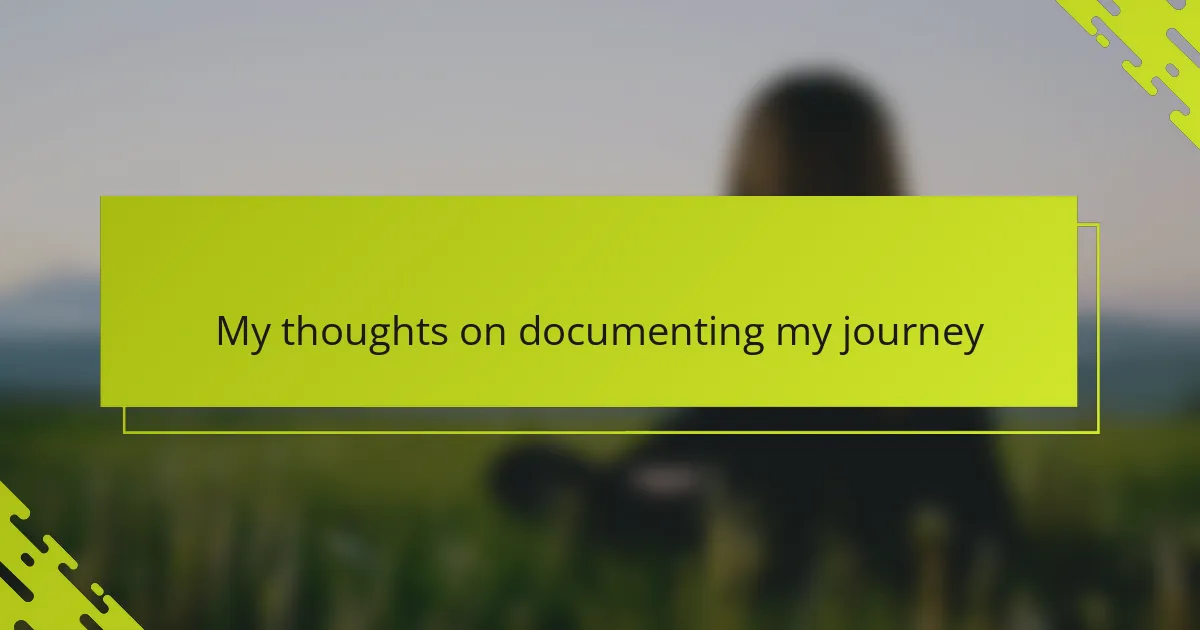Key takeaways
- Queer women culture encompasses shared experiences and fluid identities, fostering a strong sense of community and belonging.
- Documenting personal journeys can validate experiences, provide healing, and contribute to the larger narrative of queer women’s lives.
- Choosing the right documentation methods is vital, as different mediums can express emotions and truths uniquely, embracing imperfections in the process.
- Sharing stories safely nurtures connections within the community and challenges dominant narratives, amplifying diverse identities and fostering solidarity.
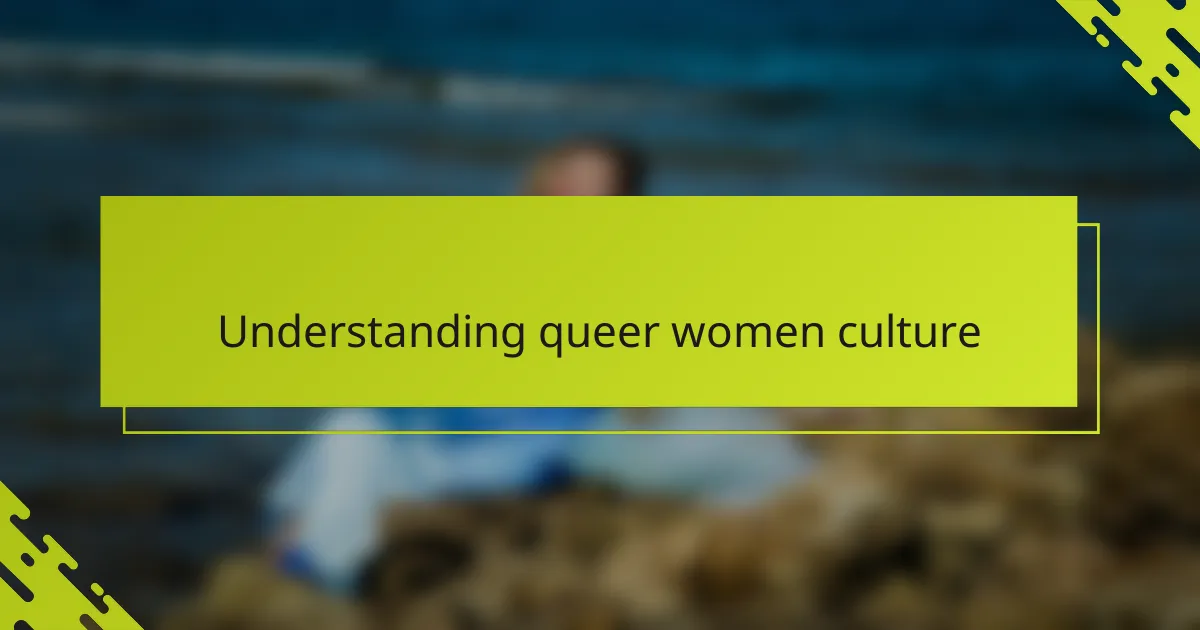
Understanding queer women culture
Queer women culture is a vibrant tapestry woven from shared experiences, resilience, and the celebration of identity. From my own journey, I’ve found that understanding this culture means embracing both the visible moments of pride and the quiet, everyday acts of authenticity that aren’t always seen. Have you ever noticed how these small acts—choosing a certain pronoun, or expressing love openly—carry so much weight in building a sense of belonging?
What strikes me deeply about queer women culture is its fluidity and refusal to fit into neat categories. It’s a space where definitions evolve, and identities intersect in ways that challenge conventional norms. This dynamic nature often creates a profound sense of community, even amidst diversity, which I find both inspiring and comforting.
Sometimes, I wonder how much of queer women culture is passed down through stories, both spoken and unspoken, that connect generations. For me, documenting my own path becomes an act of honoring those narratives—acknowledging pain, triumph, and everything in between. Isn’t that how culture lives on, after all?
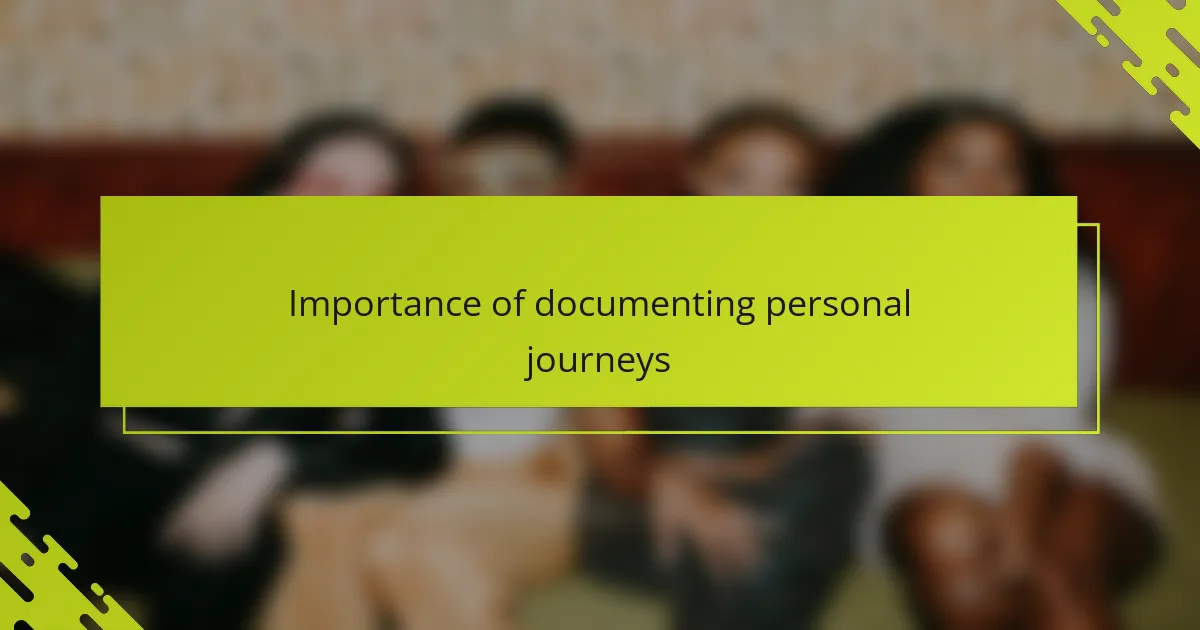
Importance of documenting personal journeys
Documenting personal journeys feels like holding a mirror to my own evolution, allowing me to see growth that might otherwise blur in the rush of everyday life. When I look back on my notes or photos, I’m reminded not just of where I struggled, but also of moments of courage I almost forgot I had. Have you ever stumbled upon an old journal entry and been surprised by how far you’ve come?
There’s also something deeply validating about writing down my experiences as a queer woman. It turns intangible feelings—confusion, joy, fear—into tangible proof that my story matters. I think that kind of affirmation can be healing and empowering, especially when the world around us sometimes tries to erase or overlook our existence.
Finally, I believe documenting isn’t just for me; it’s an invitation to others to witness and connect. By sharing my journey, I want to contribute a piece to the larger mosaic of queer women’s lives, showing that our complexities and contradictions are not only real but worthy of being seen. Doesn’t that make our personal stories a kind of collective resistance?
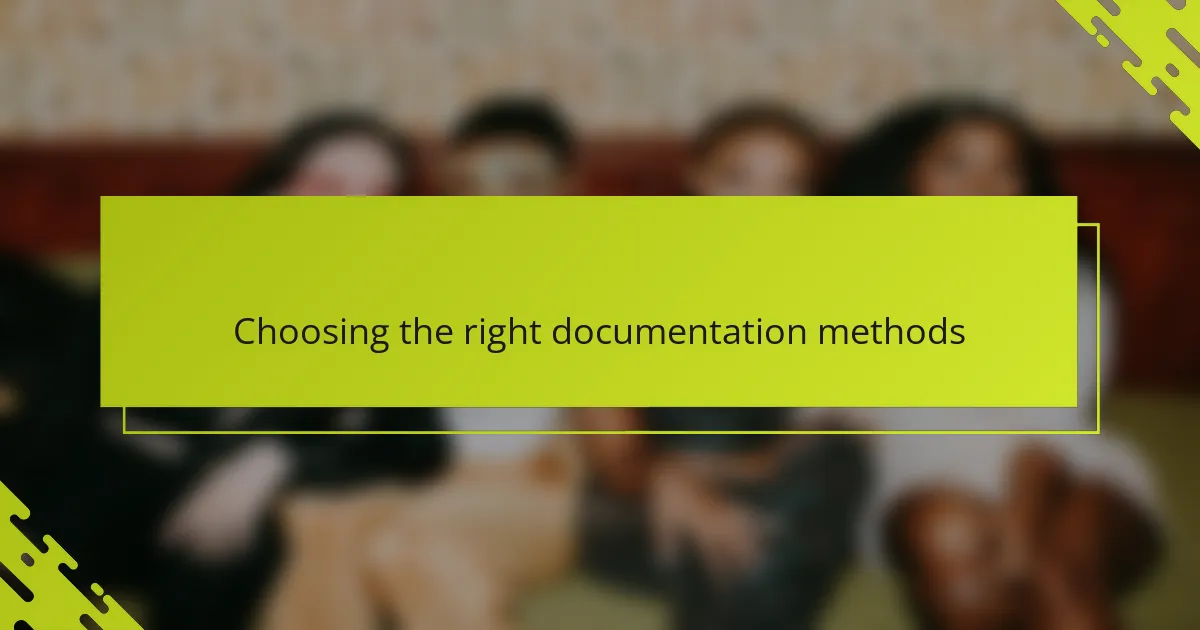
Choosing the right documentation methods
Choosing how to document my journey has always felt like choosing the lens through which I see myself. Sometimes, I prefer jotting down quick notes in a journal because the act of writing slows me down and helps me process feelings in real time. Other times, I turn to photography or voice recordings, capturing moments that words alone can’t fully express. Have you noticed how certain methods feel more honest or intimate depending on your mood or circumstance?
I’ve realized that flexibility is key—what works today might not work tomorrow, and that’s okay. For instance, during periods of intense emotion, I find that drawing or creating visual art allows me to express what feels tangled inside. Meanwhile, storytelling through video can capture the nuances of voice and gesture that writing might miss. Choosing the right method feels less about perfection and more about finding what best holds the truth of the moment.
What really matters to me is that whichever method I choose, it honors my experience without judgment or expectation. It’s not about documenting for the sake of records but rather about honoring each fragment of my identity as a queer woman. Have you ever felt the relief of seeing your story reflected back through a medium that truly resonates? That recognition, I believe, is where real healing begins.
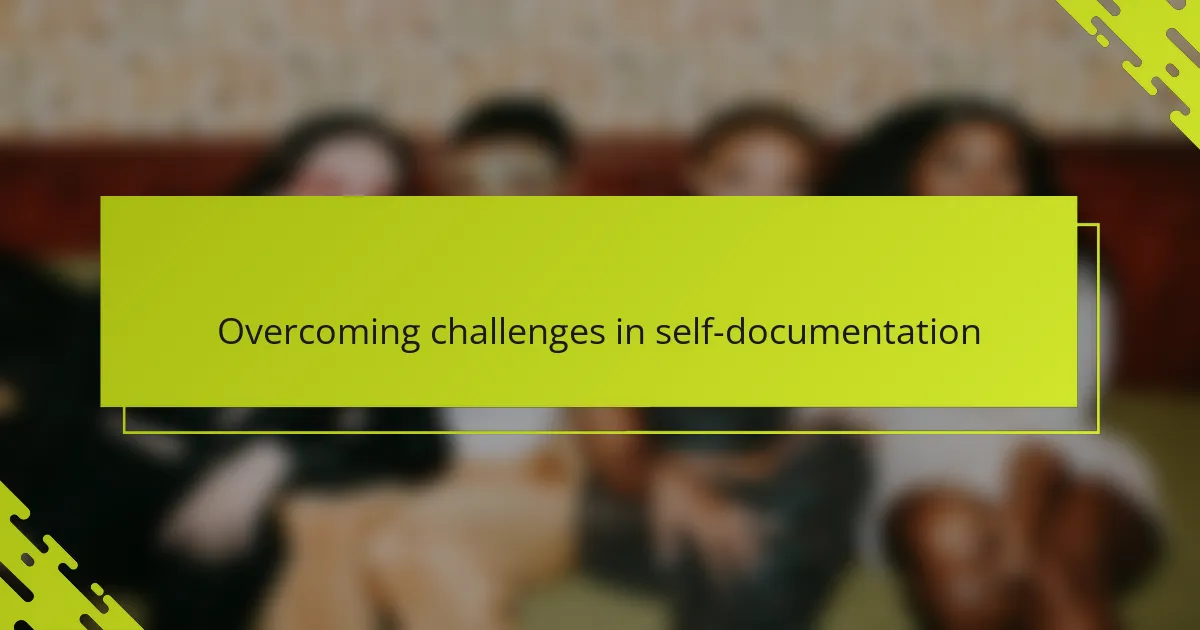
Overcoming challenges in self-documentation
Sometimes, the hardest part of documenting my journey is confronting the vulnerability that comes with exposing parts of myself I usually keep hidden. I’ve hesitated to write or share certain experiences, worried they might be misunderstood or judged. Have you ever felt that tension between wanting to be seen and the fear of being vulnerable?
I’ve also struggled with consistency—finding the time and emotional energy to keep my record going when life feels overwhelming. There were moments when I doubted the value of my story, questioning if anyone else would care enough to listen. But then I remind myself that these small acts of self-documentation are powerful tools for my own self-understanding and growth.
At times, I’ve battled with the messy, nonlinear nature of my feelings, making it hard to capture everything coherently. Instead of waiting for perfect clarity, I’ve learned to embrace the rawness—the fragmented thoughts, the contradictory emotions—as part of my authentic truth. Doesn’t allowing space for imperfection make the process more human and freeing?
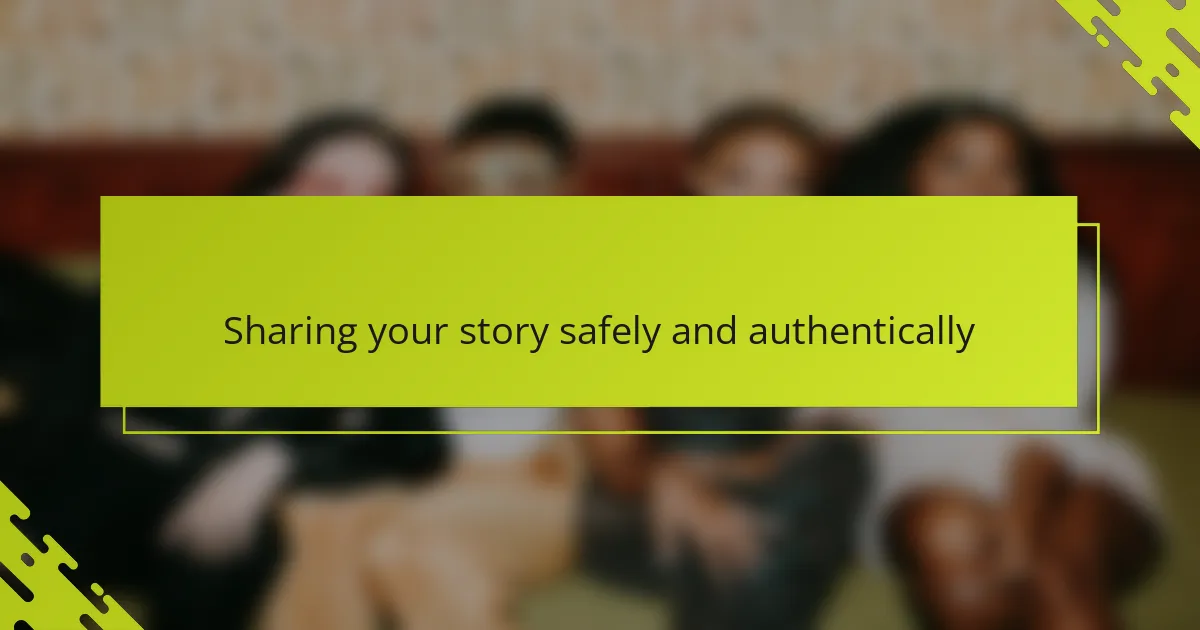
Sharing your story safely and authentically
Sharing my story safely means creating boundaries that protect my well-being while still allowing my truth to shine through. I’ve found that choosing who to confide in and where to share—whether it’s a private journal, a trusted friend, or a closed online community—makes all the difference in feeling secure. Have you ever felt the relief of opening up in a space that felt like a sanctuary rather than a spotlight?
Being authentic while sharing can feel like walking a tightrope between honesty and vulnerability. I remind myself that authenticity doesn’t require revealing everything at once or presenting a perfect narrative—sometimes, it’s about showing the messy, unfinished parts too. How often do we underestimate the power of partial truths shared with care?
There’s also a strength in owning the way we tell our stories: choosing the moments, words, and emotions that resonate most deeply. For me, this intentionality turns storytelling into an act of self-respect and resilience, transforming fears into affirmations. Isn’t that what makes sharing both courageous and healing?
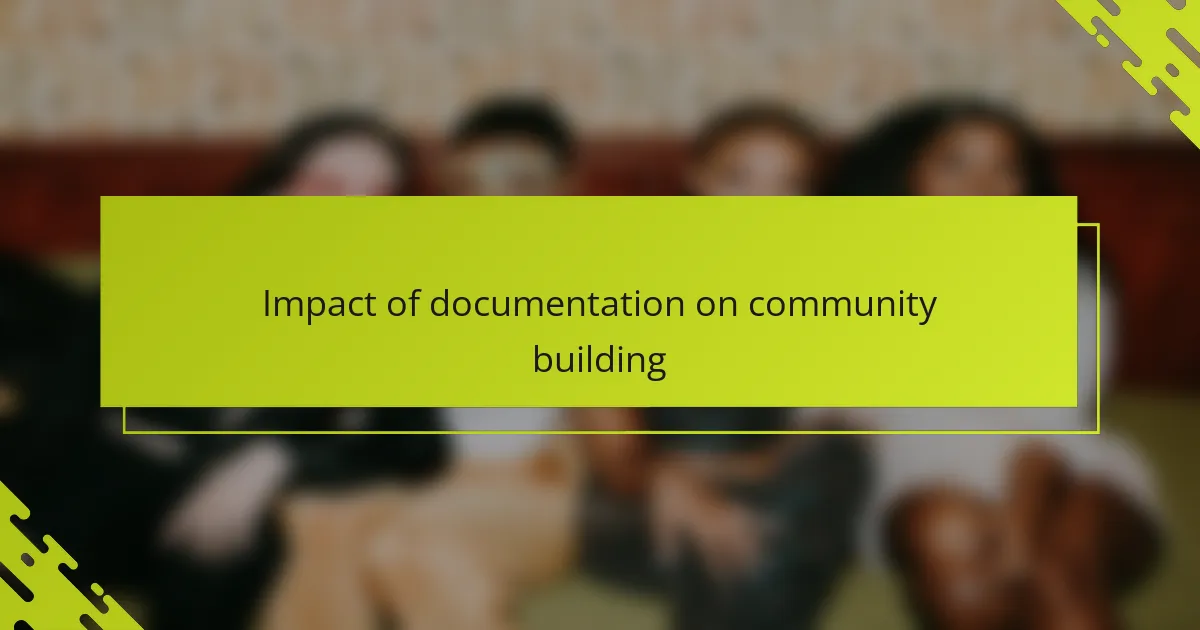
Impact of documentation on community building
When I reflect on how documenting my journey impacts community building, I see it as creating bridges between isolated experiences. Each story shared becomes a thread that weaves individuals closer, reminding us that we’re not alone in our struggles or joys. Have you ever felt that sudden connection when reading someone else’s truth, as if they were speaking directly to your own heart?
There’s something powerful about visibility through documentation; it validates diverse identities within queer women culture and invites others to see themselves reflected. I often think about how a single story, once shared, can encourage someone else to begin their own narrative. This ripple effect fosters trust and solidarity—key ingredients in any thriving community.
At times, I’ve noticed that documenting not only builds bonds outwardly but also nurtures internal community strength. When our stories accumulate, they challenge dominant narratives and create new spaces where complexity and nuance are celebrated. Doesn’t it feel liberating to know that by simply telling my story, I contribute to reshaping what community means for all of us?
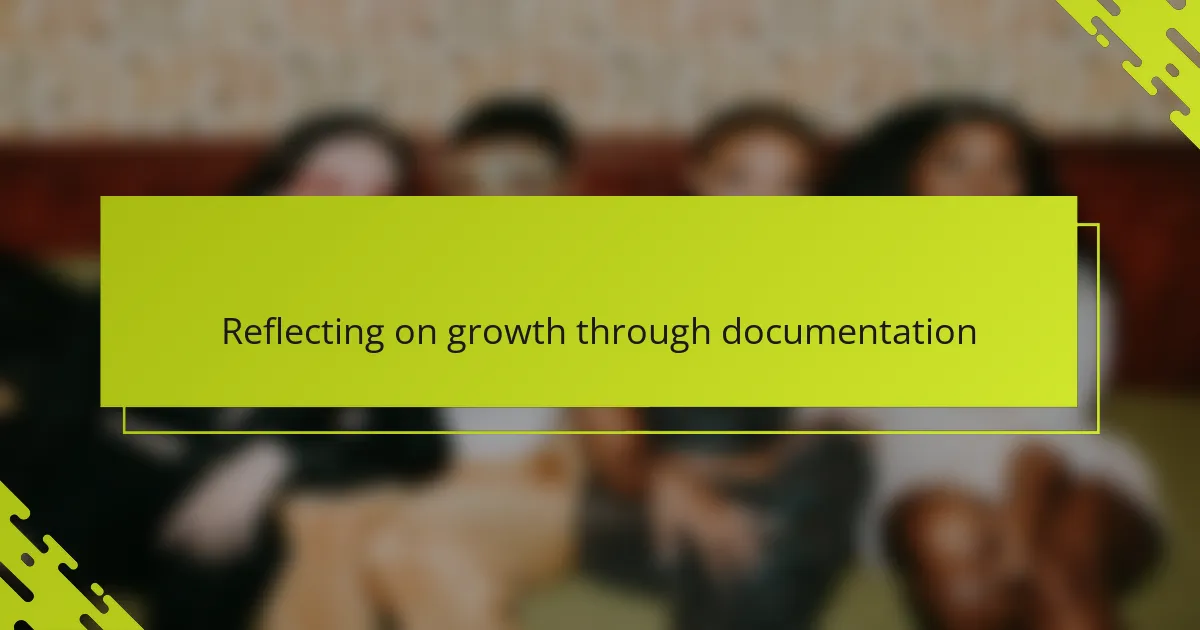
Reflecting on growth through documentation
Looking back on my documented journey, I’m often struck by how visible my growth becomes—like watching a time-lapse of someone learning to trust themselves more deeply. Have you ever flipped through old entries and realized that the person writing those words was discovering strength they didn’t even know they had? It’s these reflections that remind me how far I’ve come, even when the day-to-day feels stagnant.
Sometimes, the act of documenting has helped me make sense of confusing shifts in my identity or feelings. Writing or recording those moments gave me a way to track progress that wasn’t always linear, but no less real. I think that witnessing growth in this raw, uncensored form is what makes documentation uniquely powerful; it holds space for both triumph and struggle without forcing neat conclusions.
What surprises me most is how these records don’t just capture change—they encourage it. Each time I revisit a journal page or a photo, I’m invited to reengage with my evolving self, offering fresh insight or renewed motivation. Isn’t it incredible how documenting becomes not just a mirror but a gentle nudge forward on this ongoing journey?
